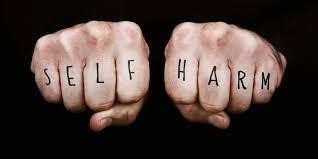
(Author: Dyah Pradnya Paramita, SST., M.Kes, Lecturer of D3 Midwifery Study Programme, Alma Ata University )
D3 Midwifery Study Programme of Alma Ata – Recently, the public was shocked by the news about 40 junior high school students injuring themselves with sharp objects. It turns out that this phenomenon also occurs in various regions in Indonesia and even in the world. The phenomenon of self-harm is defined as self-harming activities to relieve frustration, stress, and other type of emotions. Each person has different ways of self-harm, such as pulling hair, pinching, biting, scratching, hitting, ingesting harmful substances, and cutting. The initial purpose of someone doing self-harm is not to end their life, but if this becomes a habit then of course it is very dangerous for one’s physical and mental health. According to Healthline, 80% of people do cutting as a form of self-harm.
In several cases, self-harm is mostly done by adolescents. Based on the results of a study in 2021, adolescents (12-19 years old) are the group that commits the most self-harm. The factors behind them doing self-harm are difficulty expressing emotions and feelings, not knowing how to vent their trauma, pain, and psychological pressure, and not having a solution to their loneliness including neglect and confusion.
Self-harm can be addictive. Teenagers who commit it mostly think that self-harm is a way to relieve negative feelings and they enjoy the pain they are experiencing. According to the WHO, a person who frequently commits self-harm has visible signs, both physical and psychological such as cuts on certain limbs or arms, closing themselves off from their social environment, and losing motivation as well as self-confidence. Therefore, the mental state of someone who commits self-harm is certainly not in good condition. Those who commit self-harm must immediately get the right treatment, such as drug therapy from a doctor and counselling with a psychologist. In addition, exercise using ball therapy, for instance, is also recommended to stabilise the emotions of the committer of self-harm. Push-ups, sit-ups, and martial arts are also exercises that can restore someone’s energy and increase their hormone levels making a person feel happy. By doing such exercises, they are more capable of managing their emotions and stress well and avoiding self-harm behaviour.

